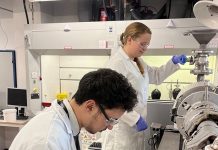Each and every one of the UK’s Control of Major Accident Hazards (COMAH) and high risk sites possesses a unique profile, built up by layers of risk and challenged by a range of threats as broad and diverse as the chemical industry itself.
Given the scope for serious business damage arising from major incidents, COMAH and high risk sites demand and deserve the best provision of security and safety.
Historically, security across most industries has been standardised as an offering where officers protected people, buildings and valuable assets. Times are changing. Now the direction of travel in the industry is to complement traditional security services with a strong emphasis on safety, tailored to the specific on-site demands of individual customer environments – a trend with powerful implications for the chemical industry.
The Enhanced Guarding Model
Whilst security itself remains a key requirement across the chemical industry, security companies are increasingly training their staff in additional competencies, in order to provide their customers with a higher level of skill and service; a logical step in the evolutionary cycle of COMAH and high risk sites, particularly in light of changing regulations. This ‘enhanced guarding’ concept is a move to effects-based security in hazardous industry, rather than treating security solutions simply as a commodity appended to high risk sites.
Security officers with enhanced health and safety training (particularly tactical first aid, which is tailored to reflect site and chemical-specific risks) can play a more active role in a company’s wider COMAH strategy. Equipped with the appropriate competencies to identify, escalate and make site-specific hazards safe, they can provide an extra layer of vigilance and support on-site staff during incidents, should it ever prove necessary.
Advancements in case management software also make a significant contribution in enhancing the safety services provided by security officers by automatically translating data into an actionable format. Recording incidents and establishing patterns is vitally important for mitigating the risk of major crises in the future; equipping security officers with the technology to do this reinforces the culture of safety that is already deeply engrained in the chemical industry.
Risks to sites in the chemical industry are multifarious and complex; the enhanced guarding model is similarly configured. As a result, the service security officers provide is significantly broadened, leading to overall levels of security and safety being increased and key messages regarding risk being strengthened among staff.
Safety and Strategy
Adherence to regulations is woven into CEOs’ business plans, as without the pillar of safety, their businesses would not survive. As the Seveso III directive will come into force on the 1st June 2015, the focus on ensuring safety at COMAH sites and their operations is becoming an ever larger part of the strategic view of business leaders in this field. Moreover, with greater transparency planned in regulation of high risk sites, CEOs will be increasingly keen to ensure plans are both understood and inspire confidence. The enhanced model can help operators comply with industry regulations in support of their own security and safety strategies.
The Seveso requirement on COMAH sites to provide a Major Accident Prevention Policy (MAPP) obliges companies to set out their emergency planning and monitoring arrangements. In the event of a hazardous incident or indeed threat which could contribute to an on-site issue, a combined safety and security offering can best render the incident safe, as well as ensuring the security integrity of the site by containing incidents where necessary.
Conclusion
Being culturally vigilant, the chemical industry recognises the need for enhancements and improvements wherever and whenever possible. Just as new technology is adopted as the pace of change demands, security should also be seen through the prism of continuous product/service development. Now is therefore the time to take enhanced security and safety officers seriously.
The enhancement of security and safety measures in the chemical industry should be seen as a part of the wider emphasis on safety in the workplace. With this trajectory already established, the chemical industry is well positioned to lead the way.













